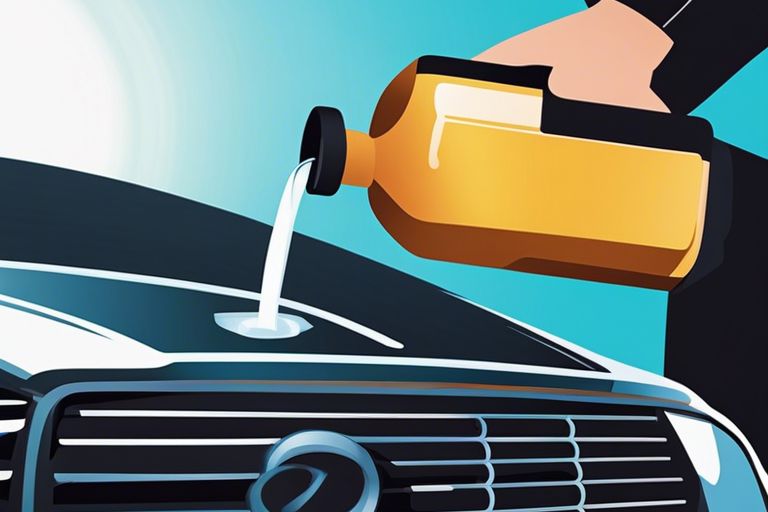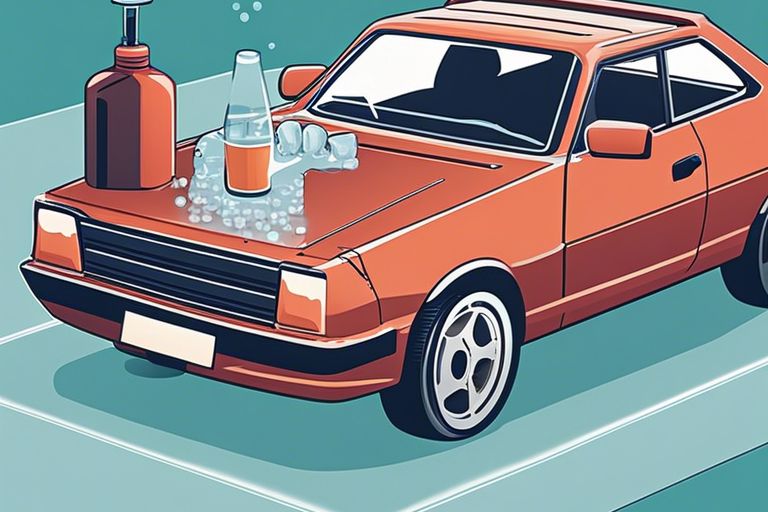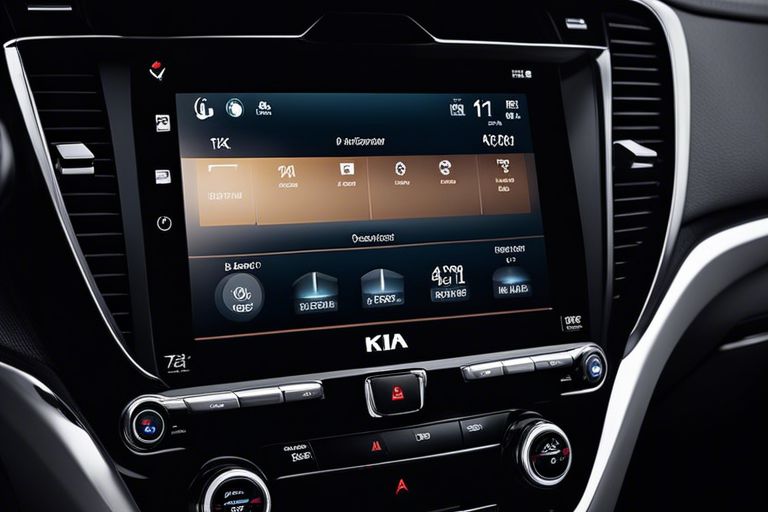Perplexed about how to put antifreeze in your car? Look no further! I am here to guide you through the essential steps of adding this crucial fluid to your vehicle. Ensuring your car has the proper level of antifreeze is essential for preventing freezing in cold weather and overheating in warmer temperatures. Neglecting to maintain this fluid can lead to costly engine damage and potentially dangerous breakdowns. By following these simple steps, you can confidently keep your car running smoothly and protect it from potential harm. For a detailed step-by-step guide, you can also check out this resource on How to Add Antifreeze to Your Engine. So let’s dive in and ensure your vehicle is prepared for whatever the road may bring!
Key Takeaways:
- Check your owner’s manual: Before adding antifreeze to your car, consult your owner’s manual to ensure you use the correct type for your specific vehicle.
- Use the right ratio: It’s crucial to mix the antifreeze with water in the correct ratio (typically 50/50) to ensure optimal performance and protection for your engine.
- Top off the reservoir: Locate the antifreeze reservoir in your car’s engine bay and carefully add the mixture to the appropriate level, being mindful not to overfill it.
- Don’t mix antifreeze types: Avoid mixing different types or colors of antifreeze, as this can lead to chemical reactions and potential damage to your car’s cooling system.
- Dispose of old antifreeze properly: When replacing old antifreeze, be sure to dispose of it safely and responsibly, as it can be harmful to the environment if not handled correctly.
Understanding the Importance of Antifreeze in Your Car
As a responsible car owner, it’s crucial to understand the importance of antifreeze in your vehicle. Antifreeze, also known as coolant, plays a critical role in maintaining the proper functioning of your car’s engine and preventing costly damage. In this section, I will discuss the vital role that antifreeze plays in keeping your car running smoothly and efficiently.
The Role of Antifreeze in Preventing Engine Freezing
Antifreeze is essential in preventing engine freezing, especially during the cold winter months. When temperatures drop, the water in your car’s cooling system can freeze, causing significant damage to the engine. This can lead to cracked engine blocks, damaged hoses, and other costly repairs. By adding the right amount of antifreeze to your car’s cooling system, you can lower the freezing point of the water, preventing it from turning into ice and causing damage to your engine. This is crucial for maintaining the overall health and functionality of your car’s engine, especially in colder climates.
The Role of Antifreeze in Preventing Overheating
In addition to preventing engine freezing, antifreeze also plays a vital role in preventing overheating. During the warmer months, your car’s engine can reach high temperatures, which can lead to overheating and potential engine damage. Antifreeze helps to regulate the temperature of the engine by removing excess heat and transferring it to the radiator, where it can be dissipated. Without the proper amount of antifreeze, your engine is at risk of overheating, which can result in serious damage and costly repairs. It’s crucial to maintain the right balance of antifreeze in your car’s cooling system to ensure that it can effectively prevent overheating.

Step-by-Step Guide on How to Put Antifreeze in Your Car
If you’re not sure how to put antifreeze in your car, don’t worry – it’s a relatively simple process. Before you begin, I recommend reviewing this Step by Step Guide on How To Top off Coolant for more detailed information.
| Before You Start | During the Process |
| – Ensure the engine is cool | – Use a funnel to pour antifreeze into the reservoir |
| – Wear gloves and safety goggles | – Fill the reservoir to the “full” line |
| – Have the appropriate type of antifreeze | – Check for leaks after adding antifreeze |
Checking the Antifreeze Level in Your Car
Before adding more antifreeze to your car, it’s important to check the current level. I recommend using a dipped stick or electronic sensor to measure the level accurately. It’s crucial to ensure that the engine is cool before removing the radiator cap to avoid any burns or injuries.
Choosing the Right Type of Antifreeze for Your Vehicle
When selecting the type of antifreeze for your car, it’s essential to choose the correct color and formula that is compatible with your vehicle’s make and model. Using the wrong antifreeze can cause serious damage to your engine, so be sure to consult your car’s manual or a professional for guidance.
Adding Antifreeze to Your Car’s Reservoir
Once you’ve determined the right antifreeze for your vehicle, it’s time to add it to the reservoir. Make sure the engine is cool, and use a funnel to prevent any spills. Always fill the reservoir to the “full” line, but avoid overfilling as it can lead to overflow and potential damage to the engine. After adding the antifreeze, be sure to check for any leaks to ensure proper sealing.
Tips for Properly Maintaining Antifreeze Levels in Your Car
Despite the often overlooked nature of antifreeze in vehicle maintenance, it plays a crucial role in protecting your engine from freezing in cold temperatures and overheating in hot conditions. Here are some essential tips for maintaining proper antifreeze levels in your car:
- Regularly check the antifreeze levels in your car’s reservoir to ensure they are at the recommended level.
- Top up the antifreeze if the levels are low, using a 50/50 mixture of antifreeze and distilled water.
- Keep an eye out for antifreeze leaks, which can cause a decrease in levels and potentially lead to engine damage.
Though it may seem like a small task, maintaining proper antifreeze levels is essential in ensuring the longevity of your car’s engine and overall performance.
Regularly Checking and Topping Up Antifreeze Levels
Regularly checking and topping up antifreeze levels in your car is crucial to prevent engine damage and ensure optimal performance. I recommend checking the levels at least once a month, especially before the onset of extreme temperatures. To top up the antifreeze, simply unscrew the reservoir cap and add a 50/50 mixture of antifreeze and distilled water until it reaches the recommended level. This simple maintenance task can go a long way in preserving your car’s engine health.
Flushing and Replacing Antifreeze According to Manufacturer Recommendations
Flushing and replacing antifreeze according to the manufacturer’s recommendations is an essential part of car maintenance. Over time, antifreeze can break down and become contaminated, losing its effectiveness in protecting the engine. I recommend following the manufacturer’s guidelines for flushing and replacing the antifreeze to ensure your car’s engine is properly protected. This may involve a complete flush and replacement every few years or as specified in your car’s maintenance manual. Keeping up with this maintenance task can prevent costly engine repairs and ensure your car runs smoothly for years to come.
How to Put Antifreeze in a Car – Vehicle Maintenance Tips
Ultimately, properly putting antifreeze in your car is essential for maintaining the health of your vehicle. By following the steps outlined in this article, you can ensure that your car’s cooling system is functioning at its best. Remember to always consult your owner’s manual for specific recommendations, and use the proper safety precautions when working with antifreeze. For more vehicle maintenance tips and advice, visit How to Put Antifreeze in Your Car Safely. Keeping up with regular maintenance tasks like this will help keep your car running smoothly for years to come.
FAQ
Q: Why is it important to put antifreeze in my car?
A: Antifreeze, also known as coolant, helps regulate the temperature of your car’s engine and prevents it from freezing in cold temperatures or overheating in hot temperatures. It also helps prevent corrosion in the cooling system, keeping your car running smoothly.
Q: What type of antifreeze should I use for my car?
A: It’s essential to use the specific type of antifreeze recommended in your car’s owner’s manual. This could be ethylene glycol-based or propylene glycol-based antifreeze. Using the wrong type of antifreeze can damage your car’s engine and cooling system.
Q: How do I check the antifreeze level in my car?
A: To check the antifreeze level, wait for the engine to cool down, and then locate the coolant reservoir under the hood. The reservoir will have markings indicating the minimum and maximum levels. Ensure the level is between these marks and top up if necessary with the correct type of antifreeze.
Q: How do I put antifreeze in my car?
A: First, make sure the engine is cool. Locate the radiator cap and coolant reservoir under the hood. If the coolant level is low, open the reservoir cap and pour the antifreeze into the reservoir until it reaches the maximum level. Do not open the radiator cap when the engine is hot, as the pressurized hot coolant can cause severe burns.
Q: When should I replace the antifreeze in my car?
A: It’s recommended to replace the antifreeze in your car every 2-5 years, or as specified in your car’s owner’s manual. Over time, antifreeze can break down and become less effective, so regular replacement is crucial for maintaining your car’s cooling system.









Leave a comment